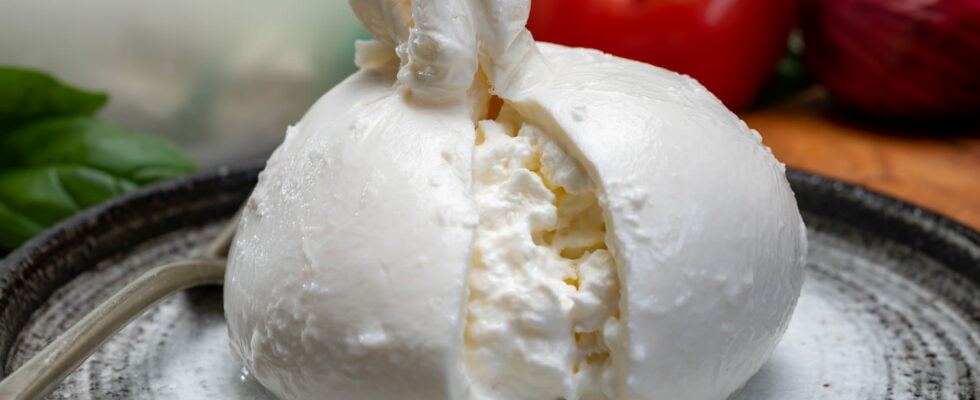Victim of its popularity, the real recipe for burrata becomes difficult to distinguish among its many industrial productions.
Burrata season is here! This creamy cheese, best enjoyed fresh, with a simple drizzle of olive oil and a pinch of fleur de sel, or even pesto alla genovese or a bed of rocket for connoisseurs, is not a real mozzarella, but its “cousin”. This little porcelain-coloured ball originated in the Puglia region in southern Italy, invented around the 1920s by a farmer, a certain Lorenzo Bianchino, who did not want to waste his leftover cow’s milk mozzarella and had the wonderful idea of shredding it and stuffing it with stracciatella cream – the equivalent of our crème fraîche – then wrapping it all in a braided green rush leaf. This explains the creamy, runny centre of burrata…
It is easy today to get this Italian cheese that has become the darling of the French: burrata is displayed in all Italian delicatessens and cheese shops, and has even invaded the shelves of our supermarkets. But be careful! Did you know that the name of burrata is not protected, and that therefore, this cheese can be made in any region of France or Italy? Manufacturers have decided to mechanize as many stages of its manufacturing as possible for the sake of profitability, while craftsmen continue to do all the stages by hand.
It’s simple: there is only one burrata in the world that has benefited from a PGI (Protected Geographical Indication) since 2016 and the PAT (Traditional Italian Agri-Food Product) label, it is the burrata di Andria, directly produced in Puglia to the south-east of the Italian boot, in its original form. How to recognize it? Everything lies on the labels or the packaging in trays or pots of this burrata, which have a blue and white logo with the design of a knotted chaplain around which is written “Burrata di Andria IGP”, the European symbol.
The “Burrata di Andria” comes in the form of a bag of hand-shaped spun pasta into which “stracciatella”, an amalgam of cream and filaments of this same spun pastry, has been inserted, closed with a tie. food raffia. Do not panic if the burrata is not closed with a rush, for health reasons, the braided rush sheet has been replaced by plastic. Packaged in a tray or pot, this ultra-fresh product should be consumed very quickly and in spring, when the cows feed on new, fatty grass in the pastures, offering milk rich in fatty substances. When slicing the dough, the tender center of the cream should immediately flow. If you are unable to find this burrata, the compromise will be to get a “Burrata di Bufala”, made with buffalo milk, creamier than that made with cow’s milk.
